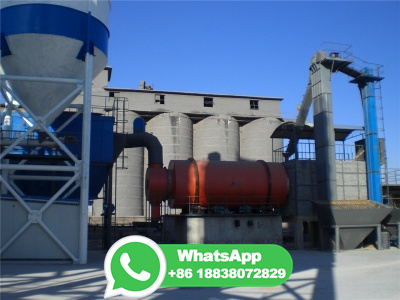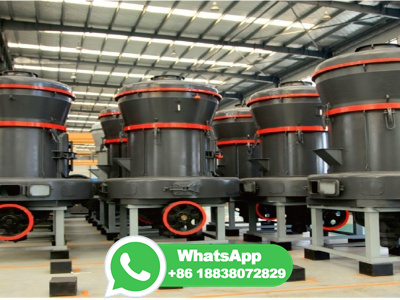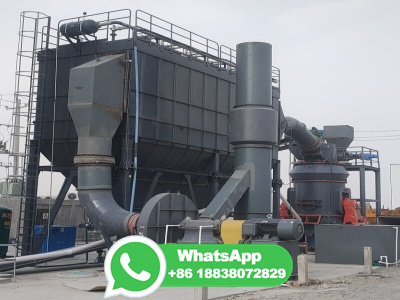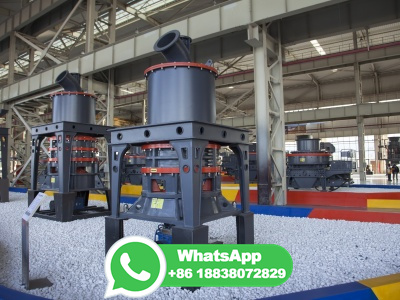
WEBProcess. Direct reduction processes can be divided roughly into two egories: gasbased and coalbased. In both cases, the objective of the process is to remove the oxygen contained in various forms of iron ore (sized ore, concentrates, pellets, mill scale, furnace dust, etc.) in order to convert the ore to metallic iron, without melting it (below 1,200 °C .
WhatsApp: +86 18203695377
WEBSteel Smelting, Alloying, Refining: In principle, steelmaking is a melting, purifying, and alloying process carried out at approximately 1,600° C (2,900° F) in molten conditions. Various chemical reactions are initiated, either in sequence or simultaneously, in order to arrive at specified chemical compositions and temperatures. Indeed, many of the .
WhatsApp: +86 18203695377
WEBMar 16, 2024 · The sintering process is an intrie system with a protracted process flow. The steps in the manufacturing line are primarily composed of the ingredients and mixing process, the sintering operation process, and the treatment of the sintered ore [39, 40]. Important parameters and characteristics of sintering process. As shown in Fig. 2, all .
WhatsApp: +86 18203695377
WEBJul 20, 2017 · Steel production consists of three major steps: Ironmaking—From Ore to Iron. The iron ore to steel process flowline can follow several different paths. Steelmaking begins by the processing of iron ore. The rock containing iron ore is crushed and pulverized to separate the gangue from the ore using magnetic rollers.
WhatsApp: +86 18203695377
WEBJun 21, 2018 · An ironworks (or iron works) is an industrial plant for the production of steel from iron ores! Before the iron ores can be fed to the ironworks, they must first be mined (ore extraction) and specially processed for the blast furnace process (ore processing). These process steps are described in more detail in the following sections.
WhatsApp: +86 18203695377
WEB27 June 2022 (IEEFA): Decarbonising the steel industry will require an increase in high grade iron ore production and improved beneficiation techniques, finds a new report from the Institute for Energy Economics and Financial Analysis (IEEFA). To reach net zero emissions by 2050, steelmakers must switch production methods from blast furnaces ...
WhatsApp: +86 18203695377
WEBThis process generates iron ore filter cake which needs to be pelletized to be used in the steel making process. Also during the processing of high grade iron ores which don't need beneficiated, fines which are generated can be pelletized and used instead of being disposed of. Iron Ore Pellets are formed from beneficiated or run of mine iron ...
WhatsApp: +86 18203695377
WEBDec 1, 2023 · Usually, Iron Ore is manufactured and converted into Pellets. These are oval lumps of iron ore that are hardened using fuel. This process of converting iron ore into pellets is known as Pelletization. Iron Ore Pellets are then used in the production of steel. Pellets are usually preferred instead of raw Iron Ore because it allows for maximum ...
WhatsApp: +86 18203695377
WEBIron ore prices refer to Iron Ore Fine China Import 62 percent grade Spot Cost and Freight for the delivery at the Chinese port of Tianjin. Is used to make steel for infrastructure and other construction projects. The biggest producers of iron ore are China, Australia and Brazil. Others include India, Russia, Ukraine and South Africa.
WhatsApp: +86 18203695377
WEBJul 1, 2021 · Iron and steelmaking is the largest single industrial CO 2 emitter, accounting for % of all CO 2 emissions on the planet. This fact challenges the current technologies to achieve carbonlean steel production and to align with the requirement of a drastic reduction of 80% in all CO 2 emissions by around 2050. Thus, alternative reduction .
WhatsApp: +86 18203695377
WEBSmelting involves heating up ore until the metal becomes spongy and the chemical compounds in the ore begin to break down. Most important, it releases oxygen from the iron ore, which makes up a high percentage of common iron ores. The most primitive facility used to smelt iron is a bloomery. There, a blacksmith burns charcoal with iron .
WhatsApp: +86 18203695377
WEBOct 17, 2017 · Ironmaking 101 – From Ore to Iron with Smelting and Direct Iron Reduction. Figure 1: Steelmaking byproducts for blast furnace (BF), basic oxygen furnace (BOF) and electric arc furnace (EAF) processes. Source: World Steel Association (worldsteel) The first step in the production of steel or cast iron alloys is the reduction of iron ore—which ...
WhatsApp: +86 18203695377
WEBFeb 16, 2022 · How Iron Was Made. Iron making evolved over a few thousand years. Using the ancient "bloomery" method, iron ore was converted directly into wrought iron by heating the ore while at the same time melting the ore's impurities and squeezing them out with hand hammers. This is also called the "direct process." By the 1100s water .
WhatsApp: +86 18203695377
WEBProcessed taconite pellets as used in the steelmaking industry, with a US quarter ( in./ mm) shown for scale.. Iron mining in the United States produced 48 million metric tons of iron ore in 2019. Iron ore was the thirdhighestvalue metal mined in the United States, after gold and copper. Iron ore was mined from nine active mines and three .
WhatsApp: +86 18203695377
WEBJun 4, 2015 · Overview of the products that make each stage of the iron and steel manufacturing process possible, from incoming raw materials to the final coating line.
WhatsApp: +86 18203695377
WEBDec 19, 2023 · As steel products became more sought after, demand for iron ore increased dramatically. Today, around billion tonnes of it are mined yearly, with 98% of its iron destined for the steel smelter. But before it's blended and rolled out into its many forms, steel was iron, and iron was iron ore, locked up underground in hard rock .
WhatsApp: +86 18203695377
WEBSep 16, 2016 · Carbon, which comes from coke, forms carbon monoxide on reaction with oxygen and converts molten iron to steel. The molten steel is then removed from the furnace and poured into premade casts to ...
WhatsApp: +86 18203695377
WEBSix steps to process iron ore. 1. Screening. We recommend that you begin by screening the iron ore to separate fine particles below the crusher's CSS before the crushing stage. A static screen is used to divert the fine particles for crushing. This step prevents overloading the crusher and increases its efficiency.
WhatsApp: +86 18203695377
WEBMay 2, 2022 · Openhearth process (also called the regenerative open hearth): A bit like a giant fireplace in which pig iron, scrap steel, and iron ore are burned with limestone until they fuse together. More pig iron is added, the unwanted carbon combines with oxygen, the impurities are removed as slag and the iron turns to molten steel.
WhatsApp: +86 18203695377
WEBFeb 16, 2017 · The sintering process, depicted in Figure 1, involves the appliion of heat to fine iron ore particles, transforming them into coarser grains [16]. Firstly, various raw materials, including iron ...
WhatsApp: +86 18203695377
WEBFeb 5, 2024 · By extracting metallic iron without producing carbon dioxide, the new process could even be carbon negative, at least for part of the world's iron production. 5 Feb 2024. 12:00 PM ET. By Robert F. Service. A new process aims to reduce carbon emissions generated by forging iron in blast furnaces. Ty Wright/Bloomberg via Getty .
WhatsApp: +86 18203695377
WEBGreen Iron is a description for sustainable processes under development, many that use renewable electricity and green hydrogen (instead of coal or natural gas and other fossil fuels), to convert iron ore into iron products that can then be used to create highgrade steel. These processes have the potential to reduce steelmaking carbon ...
WhatsApp: +86 18203695377
WEBNov 15, 2022 · The iron ore sintering, an energyintensive industry, contributes to large emissions of Volatile Organic Compounds (VOCs) due to its high dependence on fossil fuels. The emissions of VOCs from the iron ore sintering process have been ignored until now, despite the welldocumented atmospheric and human health hazards associated .
WhatsApp: +86 18203695377
WEBIron ore reduction is an important process in the iron/steelmaking industry, where iron ore is reduced to metallic iron, usually with coal, coke, natural gas, CO, or hydrogen as the reducing agents. Fig. 1. Scheme of the CBGIOR process ( Wei et al., 2017a,b ).
WhatsApp: +86 18203695377
WEBMar 1, 2019 · Typically, coking, sintering, steelmaking, casting and rolling are the main processes employed in an integrated iron smelt plant. Pollutants emission from iron ore sintering process is the most serious part (Jia et al., 2015, Zhou et al., 2016).In the sintering process, as shown in Fig. 1, the materials in sinter bed exhibit sinter zone, .
WhatsApp: +86 18203695377
WEBNov 6, 2023 · The iron ore sintering process is a crucial step in the production of steel [23, 24].This process has been proven to be a successful method for solid waste treatment and as a raw material processing process for ironmaking.
WhatsApp: +86 18203695377
WEBThe integrated iron and steelmaking process, which involves blast furnace (BF) ironmaking followed by basic oxygen steelmaking (BOS). It is the preferred route where the demand for steel is high, and iron ore and coal are readily available. 2.
WhatsApp: +86 18203695377
WEBFeb 14, 2017 · The metallic iron in this process is produced by the reduction of iron oxide below the fusion temperature of iron ore (1535 deg C) by utilizing carbonaceous material present in the noncoking coal. As the iron ore is in direct contact with the reducing agent throughout the reduction process, it is often termed as direct reduced iron (DRI).
WhatsApp: +86 18203695377
WEBOct 30, 2023 · With a better and fuller understanding of the chemistry of turning raw iron ore into solid steel, researchers at Stanford hope to decarbonize one of the world's most carbonintensive industries. ... Ironmaking is a multistep process in which iron ore (hematite, Fe2O3) is oxidized first into magnetite (Fe3O4) and then to an intermediate ...
WhatsApp: +86 18203695377
WEBSep 1, 2023 · Dive deep into the origins of steel with a comprehensive guide to iron ore. Uncover its types, uses, and how it shapes the metalworking industry.
WhatsApp: +86 18203695377
WEBNew Zealand Steel steel complex, fed by direct reduction rotary furnaces (SL/RN process) (capacity 650,000 t/year).. In the iron and steel industry, direct reduction is a set of processes for obtaining iron from iron ore, by reducing iron oxides without melting the metal. The resulting product is prereduced iron ore.. Historically, direct reduction was .
WhatsApp: +86 18203695377